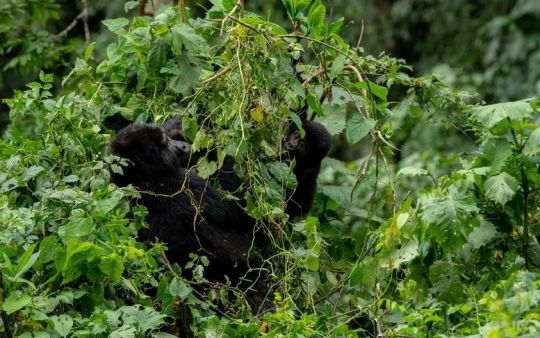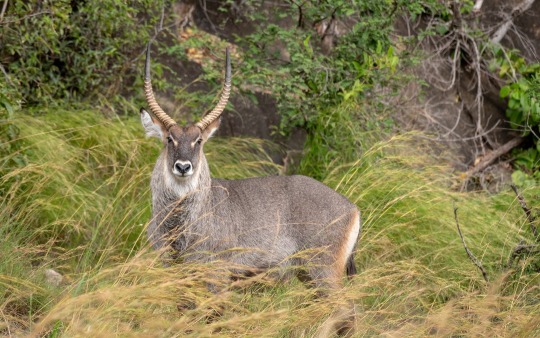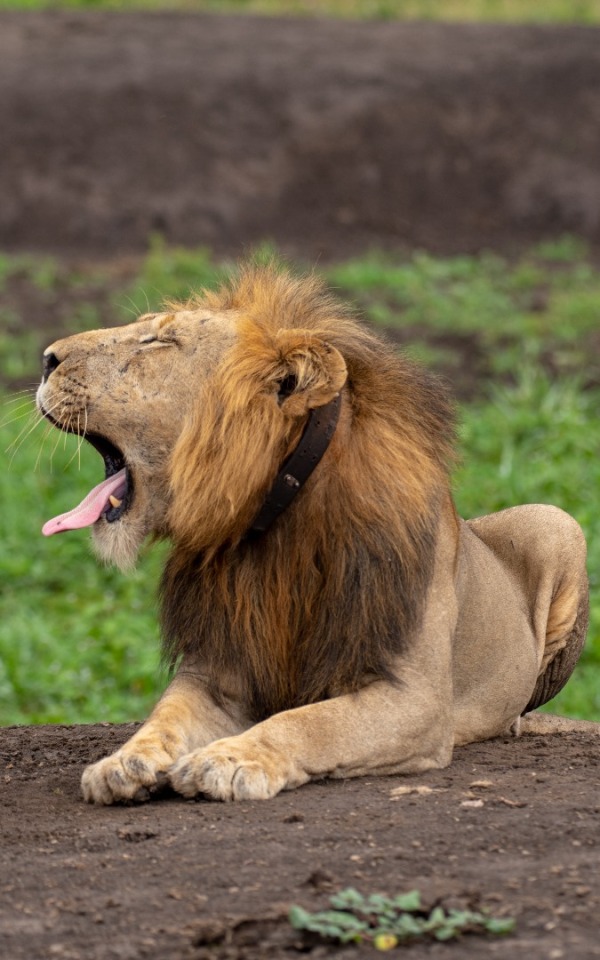Text
Night Safari
A night game drive under huge starry skies, reveals another side of the bush, one that is alive with scurrying nocturnal animals.
The person behind the spotlight swings the beam back and forth, checking under bushes and trees and among branches, looking for shining eyes.
Most exciting of all is an encounter with the leopard. Rarely seen in daylight, it will completely ignore the interruption moving purposefully along, with a haughty flick of a white-tipped tail, it slips silently into the night.
A night safari is remarkable
0 notes
Text

Wildlife marks its mark
Most large herbivores are fond of taking mud and dust baths to cool themselves and help rid the skin of parasites.
This habit creates pits of activities around the ecosystem, spots which are temporarily clear of vegetation, but rich in the nutrients of the animals that visit them.
When the wallow falls out of the favor, the vegetation that recolonizes the spot is particularly lush.
0 notes
Text

Wildlife makes its mark
Major herbivores make their mark on the vegetation, and therefore the look of an area, more than the carnivores.
Grass along River Nile is kept short by Hippos grazing at night.
Feeding giraffes hedge the smaller acacia trees and create a browsing table which is more dense than if the shrub were not browsed.
It is important to leave behind your fears of the unknown and look beyond headlines and experience #PearlofAfrica
0 notes
Text

Take in the entire world of the African bush, down to its smallest insect inhabitants.
The wonderful wildlife and extraordinary ecosystems that it inhabits.
Animal signs everywhere, some are subtle and fleeting, like the nests of birds and insects, others are etched into the ecosystem.
Few People visit once, most are drawn back again and again. #exploreuganda#spectacularsafarisuganda#gorillatracking#bwindiimpenetrableforest#PearlofAfrica
0 notes
Text

In #Eastafrica, two types of waterbucks occur; the Defassa waterbuck and the common waterbuck distinguished only by the white pattern on the rump.
The Defassa waterbuck have long bodies and necks, shorts legs and a mane on their necks.
Only male waterbucks have horns curved and vary in length from 55 to 99cm, determined by age.
You can see them in #ugandasavannahnationalpark, #murchisonfallsnationalpark#queenelizabethnationalpark and #kidepovalleynationalpark#ExploreUganda#spectacularsafarisuganda
0 notes
Text

Baboons are omnivorous and highly adoptive monkeys. They will eat just anything edible.
They can survive solely on grass which gives them an advantage of occupying savannahs with less competition from other monkeys.
#Exploreuganda#PearlofAfrica#spectacularsafarisuganda#olivebaboon
0 notes
Text

Rhinos are seldom found far from a source of water, but during a period of drought they can go for up to five days without drinking. They are fond of rolling on their sides in mud or dust wallows. They can not roll on their backs because of the elongated, blade-like protrusions on their spine. Visitors are allowed to track Rhinos at Ziwa rhino sanctuary and at a small fee charged.
0 notes
Text

An Elephant's inherent mobility allows it to select foods from a variety of habitats over a home range which may be thousands of square kilometers The availability of grass for a good part of the year is important. Elephants move daily and seasonally between different parts of the habitats from woodland to grassland, from bushland to swamp, and back again. You will most likely see them in Queen Elizabeth National Park, Murchison Falls National Park and Kidepo Valley National Park.
..
0 notes
Text
Baboons take to the trees for defense purpose, but spend most of their waking time on the ground, foraging for shoots, seeds, flowers, roots and insects.
Baboon society is based on enduring core friendships which are probably formed between females as they grow up. Baboon' main enemy is man with whom they compare for agriculture crops.
They are frequently seen on the fringes of forest reserves and even along the roadside elsewhere in the country.
exploreuganda

0 notes
Text

Nudging up to the congolese border south of lake Edward, the Ishasha plains can be visited en route between Mweya and Bwindi national park.
Ishasha is worthwhile both for its game viewing and its wilderness atmosphere.
The lions of Ishasha habitually climb high into the trees, a custom that probably developed to escape biting insects but is now ingrained
0 notes
Text

There is quite a controversy about the function of the stripes but the general opinion is that they serve as a form of visual anti-predator device, either as a camouflage or to break up form when seen from a distance.
Zebras have evolved stomachs that allow them feed on coarse, stemmy grass largely passed over by other members of the grazing community, so they can survive where other grazers cannot.
Among the Zebra's enemies are lions, hunting Dogs and man.
Book your Uganda Safari with Spectacular Safaris Uganda for an amazing experience.
0 notes
Text

Lions' predatory habits have enhanced the evolution of a large head and powerful jaws equipped with long canines.
They are the biggest African carnivores and routinely tackle prey such as buffalo, that is beyond the ability of other predators.
A Uganda Safari will give you an opportunity to see lions in their nature habitats, at a very close range.
1 note
·
View note